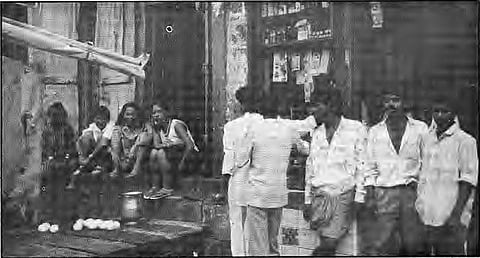The Sex Worker and the Market
When the average Nepali considers prostitution, it is most likely in the context of young village girls being lured or forcibly abducted under false pretences to India. For the more aware, prostitution looms large as the AIDS conduit which will directly transfer the dreaded disease from the brothels of Bombay to the Nepali hinterland. Very few choose to question or consider the reality behind these assumptions, or the alarmingly high numbers involved in the sex industry.
Part of the problem is that there is extreme paucity of data regarding prostitution. Most of the present theories and opinions are derived from second-hand heresay and not from empirical research. The information gap also probably derives from middle-class mores of Kathmandu society. Even serious researchers tend to shy away from discussion of sex in public or private life. In the end, the phenomenon of prostitution is ignored, or sensationalised from time to time.

